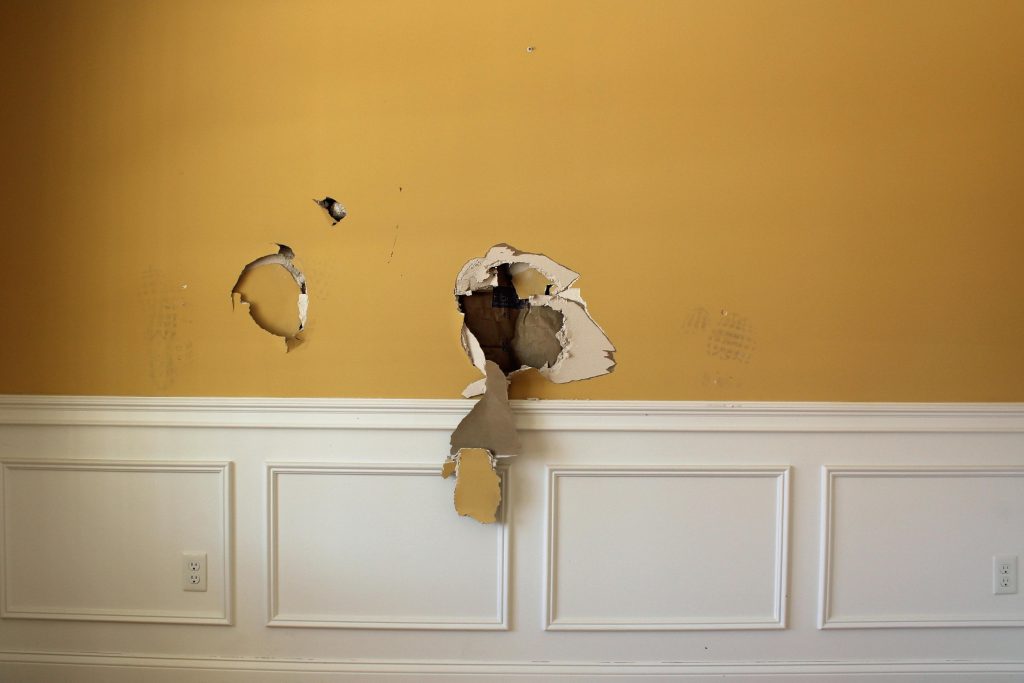
Ah, the dreaded phrase: fair wear and tear. Whether you’re occupying a rental property or renting one out, fair wear and tear can easily cause confusion and disagreements between all involved in the process. From first time renters to seasoned landlords, many find it difficult to decipher what counts as fair wear and tear.
So how do you know what is fair wear and tear and what is property damage? Is there a difference between the two?
Discover what fair wear and tear is in the UK and everything you need to know as a tenant with this Stanfords guide.
What is fair wear and tear?
Fair wear and tear relates to the deterioration of an item or fixture in a rental property that can reasonably be expected over the course of a tenancy. This deterioration is not a result of any actions – or inaction – of the tenant, and would happen no matter who the tenant is.
Sometimes, landlords and tenants aren’t on the same page about which damages would have happened regardless of who the tenant is. Both landlord and tenant don’t always consider whether the deterioration would have naturally happened anyway, how many people there are in the property and if there are any pets at the property.
These factors can greatly impact what level of damage can be considered fair wear and tear, as in a property where six people and a cat live, there will be more deterioration than in a property where just two people live. It’s also important to be realistic – not everything will remain in tip top condition after it has been used and lived in.
What is property damage?
Property damage is generally classified as destruction or damage of a personal asset – in this case the property – by negligence and neglect, malicious destruction or environmental factors such as natural disasters. With a rental property, this is different to fair wear and tear, as the damage occurred is not reasonable for the amount of time the tenants have lived in a property, or the amount of tenants.
While accidents are unfortunate, they can sometimes be classed as property damage, as a landlord might reasonably expect such a thing to not happen. For example, accidentally smashing a window wouldn’t be fair wear and tear – rather property damage as a result of negligence.
Fair wear and tear guide for tenants
The list of questions about what counts as fair wear and tear could go on forever. We’ve brought together and answered a few of our most frequently asked questions about fair wear and tear:
Do carpet stains class as fair wear and tear?
Throughout a tenancy, it is to be expected that carpets become a little dirtier than they once were due to people walking on them daily, but not that they become stained. If a red wine stain appears on a cream carpet, it would be difficult to find a landlord that would accept the plea of fair wear and tear.
Is carpet damage fair wear and tear?
Similar to how stains on carpets would class as property damage, tears and holes in a carpet would too. A landlord should expect the carpet to become a little more worn throughout the course of the tenancy, but not for it to be physically damaged.
Placement of furniture and people moving around the property both would contribute to the wearing down of a carpet as time goes on, but not holes or tears. In this instance, a landlord would likely charge for property damage and tenants would find it difficult to argue fair wear and tear.
Is cleanliness included in fair wear and tear?
It is an accepted rule that at the end of a tenancy, a rental property should be left in the same cleanliness as it was at the start. Because of this, cleanliness is not usually included in fair wear and tear. Items may be worn from use, but should still be in a clean and sanitary condition.
Are nail holes fair wear and tear?
Up for debate, a few small nail holes can sometimes be considered fair wear and tear. However, this depends on any rules set out by your landlord in the contract.
If a landlord has specified in a contract which you have signed that you are unable to hang things on the wall, then nail holes could be considered property damage. It might seem like a minor detail in a long contract, but could save you forking out for repairs.
Are scuffs and marks fair wear and tear?
Yes, oftentimes scuffs and marks on surfaces or appliances are considered fair wear and tear – it shows they’ve been used by tenants. From scuffs on wooden floors to marks on walls, it isn’t unreasonable for this to happen over the course of a tenancy.
Any issues would arise from there being excessive marks and scuffs in the property – either for the amount of people living in the property or the length of the tenancy.
Fair wear and tear tips
Now that we’ve discussed some examples of fair wear and tear, it’s also important to touch on ways to avoid disputes about fair wear and tear in your rental property.
Take the check-in documents seriously
Usually, you are provided with lots of documents to read or sign at the start of a tenancy. While this can be frustrating, it’s important to take the time to consider each carefully before agreeing to anything.
Inventory lists are often provided at the start of a tenancy and should detail all the items in the property, as well as the condition of each. This document will be used at the end of your tenancy to compare any damages – fair wear and tear or property damage – arising from the tenancy period and to charge for as necessary.
Make sure that each and every bit of damage in the property is noted down – from chips in paint to scratches on surfaces.
Take lots of photos
While it may seem like more hassle than it’s worth when you have 101 things to do after moving into a property, if it comes to claims of fair wear and tear at the end of your tenancy, you’ll be thanking your past self.
Take photographs of any and all damages that you have noted on an inventory list or check-in document, to refer back to if you need to prove a damage was pre-existing.
Benefit from periodic inspections, legal admin and ongoing repairs by choosing property management with Stanfords.
